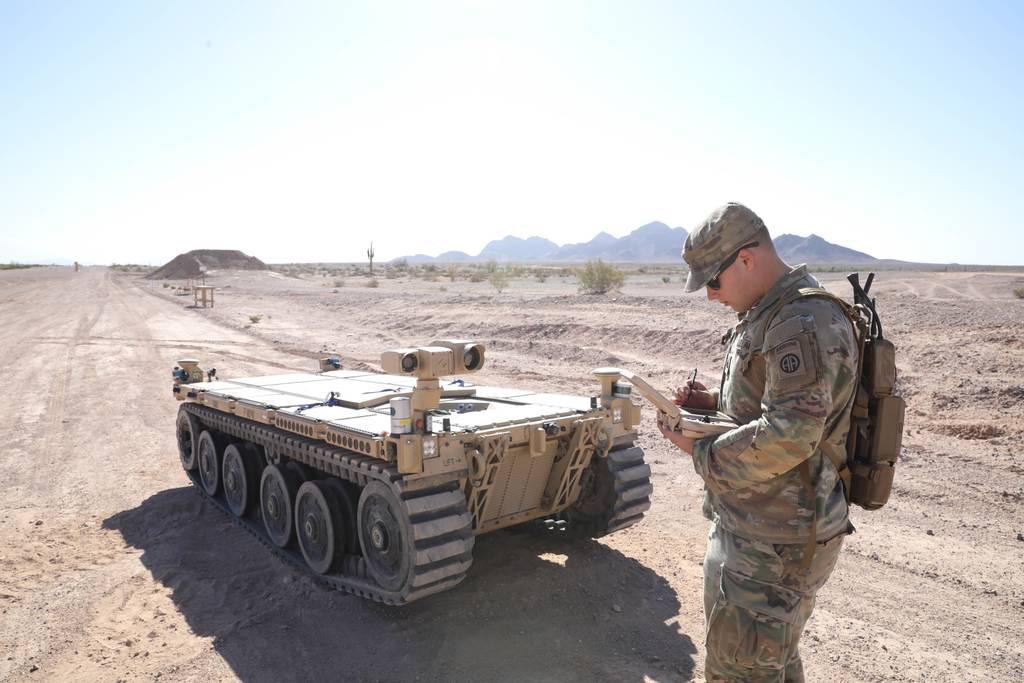
To get after that challenge a Pentagon-driven “innovation network” held a hackathon Thursday that laid out the obstacles to getting autonomous vehicles off-road and doled out cash prizes of $15,000 each to help solve the puzzle.
The innovation network included the National Security Innovation Network, the Office of the Undersecretary of Defense for Research and Engineering and the Army’s Combat Capabilities Development Command.
While the civilian sector has its own hurdles to making driverless cars mainstream, Robert Sadowski, the chief roboticist with the Army Ground Vehicle Systems Center, noted some added pressures for soldiers. For instance, service members have to drive off-road and in combat.
“A lot of the problems are totally unique to the Department of Defense,” Sadowski said. “I don’t see Ford or Chrysler or crews at Tesla even, solving those problems.”
The “Off the Beaten Path” challenged entrepreneurs to pitch ideas advancing three autonomous vehicles capabilities:
One big technical obstacle is the use of sensors. Civilian cars will use an array of sensors to spot hazards and deal with them. But sensors are not all one-way. They also emit, which is bad when soldiers are trying to remain undetected.
“We cannot use many of the sensors,” Sadowski said. “If I’m emitting (Light Detection and Ranging) that means the bad guys can see me too.”
The virtual competition, including entrepreneur pitches, concluded Thursday. Three companies received the $15,000 awards to pursue their ideas.
Representatives from each of the military branches participated in the Army Research Lab-led Hackathon event.
Jean Charles, the lead technology advisor for the Air Force Research Laboratory, noted that the air service works enough problems in the air without having to deal with the ground. But eventually, all aircraft have to come down.
“From an Air Force perspective, we try really hard to stay away from the ground,” he said.
An earlier program that might yield data for ground vehicle autonomy is the Automatic Ground Collision Avoidance System.
Charles said that system, fielded in the F-16 back in 2014, has saved 10 aircraft and 11 pilots as of 2020 data.
Beyond developing smarter software and finding good hardware solutions, a key component in future off-road autonomy has a deeply human dimension – trust.
Dr. Deji Coker, the autonomy portfolio manager for the Office of Naval Research, pointed to an easy-to-understand civilian analogy.
“You would not use cruise control if you didn’t trust it,” Coker said.
Trusted autonomy is one of a trio of focus areas the entities are working to improve. The other two are passive odometry and obstacle detection and assessment.
Passive odometry is getting autonomous vehicles to navigate the terrain without GPS. A big area for progress is finding ways to sense the environment without emitting signals. Developers also want to know if vehicles communicating with each other or with a human at another location might provide GPS-free navigation.
Obstacle detection and assessment is what it sounds like – spotting objects and figuring out what to do about them.
In the past, the idea was obstacle avoidance, but that’s not always possible.
The Pentagon wants vehicle sensors to predict if an object will move when the vehicle exerts a force on it.
The same system will need to gauge how difficult a variety of objects will be to handle, such as wire, fencing, and glass, officials said. They’re looking at how well current sensors do with obstacle detection and what could improve that, including better algorithms to provide operators with options.